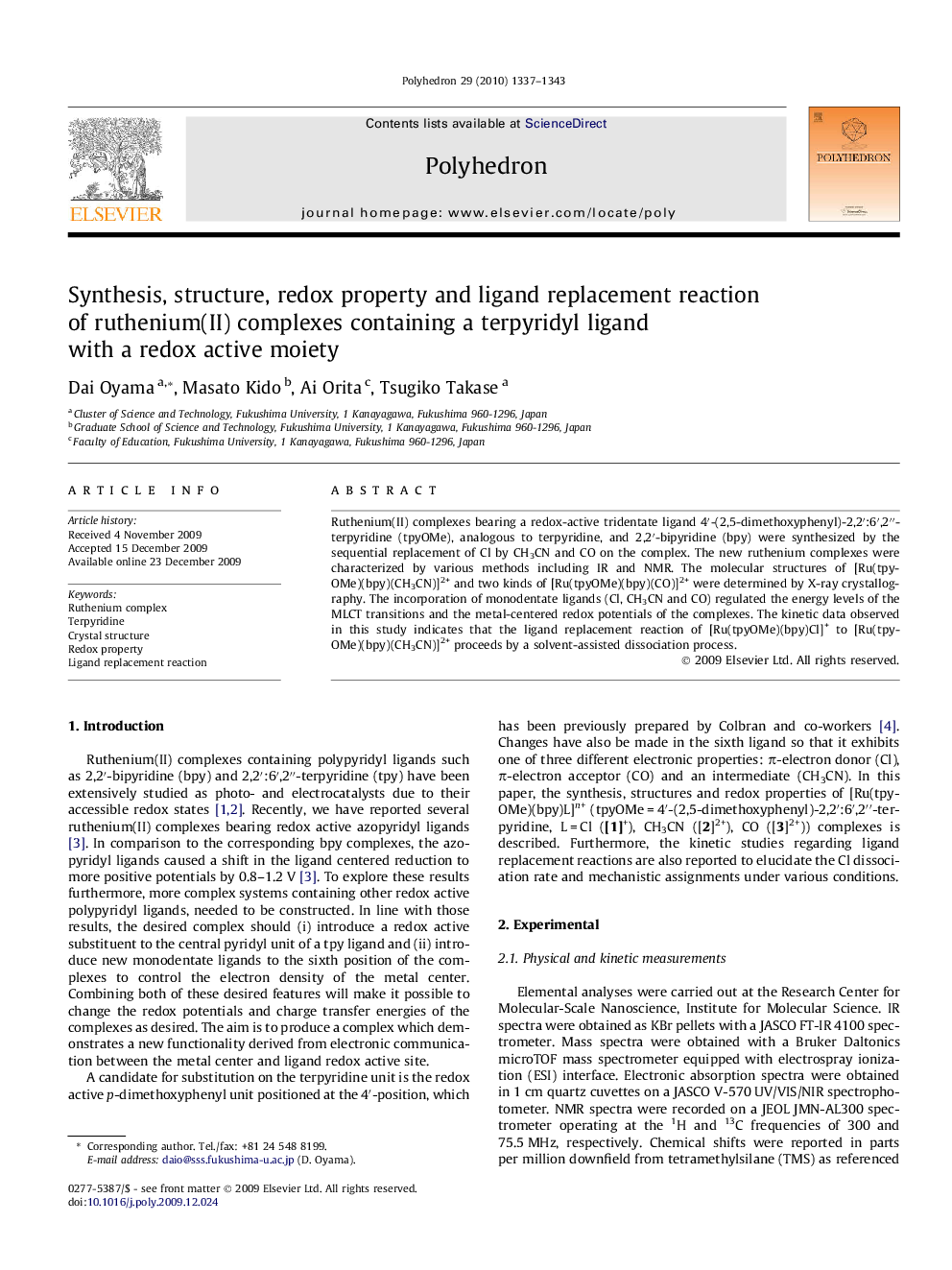| کد مقاله | کد نشریه | سال انتشار | مقاله انگلیسی | نسخه تمام متن |
|---|---|---|---|---|
| 1336905 | 979613 | 2010 | 7 صفحه PDF | دانلود رایگان |

Ruthenium(II) complexes bearing a redox-active tridentate ligand 4′-(2,5-dimethoxyphenyl)-2,2′:6′,2′′-terpyridine (tpyOMe), analogous to terpyridine, and 2,2′-bipyridine (bpy) were synthesized by the sequential replacement of Cl by CH3CN and CO on the complex. The new ruthenium complexes were characterized by various methods including IR and NMR. The molecular structures of [Ru(tpyOMe)(bpy)(CH3CN)]2+ and two kinds of [Ru(tpyOMe)(bpy)(CO)]2+ were determined by X-ray crystallography. The incorporation of monodentate ligands (Cl, CH3CN and CO) regulated the energy levels of the MLCT transitions and the metal-centered redox potentials of the complexes. The kinetic data observed in this study indicates that the ligand replacement reaction of [Ru(tpyOMe)(bpy)Cl]+ to [Ru(tpyOMe)(bpy)(CH3CN)]2+ proceeds by a solvent-assisted dissociation process.
Ruthenium(II) complexes bearing a redox-active tridentate ligand analogous to terpyridine and bipyridine were synthesized. The new complexes were characterized by various methods including X-ray crystallographic analysis. The incorporation of monodentate ligands (L) regulated the energy levels of the MLCT transitions and the metal-centered redox potentials of the complexes.Figure optionsDownload as PowerPoint slide
Journal: Polyhedron - Volume 29, Issue 4, 10 March 2010, Pages 1337–1343